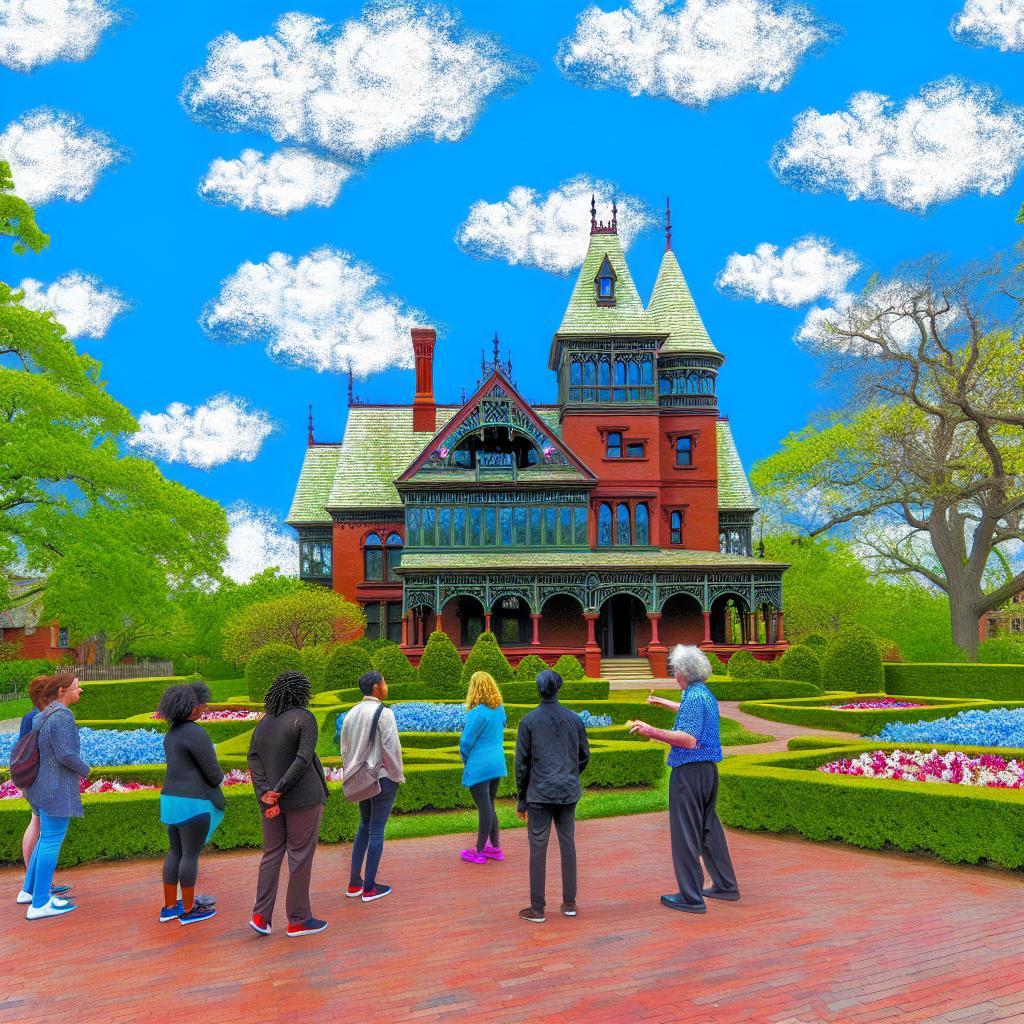Contents
The Mark Twain House: A Historical Overview
The Mark Twain House, situated in Hartford, Connecticut, represents an integral piece of American cultural and literary history. It not only offers insights into the life of one of the United States’ most illustrious authors, Samuel Clemens, but also serves as a monument to his enduring legacy under the pen name Mark Twain. Constructed in 1874, this Gothic-style mansion provided a home to Twain and his family for seventeen years, during which he penned some of his most influential works, including The Adventures of Tom Sawyer and Adventures of Huckleberry Finn.
Architectural Significance
The architecture of the Mark Twain House is a prime example of the Gothic Revival style, a choice that not only reflects the aesthetic preferences of its era but also aligns with Twain’s imaginative and unconventional character. Architect Edward Tuckerman Potter designed the house, which features distinctive attributes common to the Gothic Revival movement. These include the use of brick, elaborate dark wood trim, and interiors that combine both grandeur and an emphasis on the functionalities required during that period. Key Gothic elements are visible in its asymmetrical layouts, sharply pitched roofs, and delicately decorative brickwork, all of which highlight the artistic tendencies of the time as well as Twain’s innovative spirit.
Preservation Efforts
Preservation of this historically significant structure has been a focus for many decades. By the early twentieth century, the future of the Mark Twain House was shrouded in uncertainty due to frequent changes in ownership that led to neglect. Recognizing the building’s value, in 1929, the Mark Twain Memorial and Library Commission was established to oversee and implement structured preservation efforts. Their mission was to restore the house to its original splendor and ensure it stood as a lasting tribute to Twain’s literary contributions.
Restoration Projects
Since the inception of the Mark Twain Memorial and Library Commission, a number of restoration efforts have been executed to maintain and enhance the property’s historic charm. Among these, the most ambitious restoration project was completed in the early twenty-first century. This $16 million project was comprehensive, meticulously restoring the structure and interiors of the house based on detailed historical records and extant photographs. The primary objectives of this restoration centered around preserving the physical edifice while also refining the presentation of Twain’s life and literary achievements through enhanced exhibits and an enriched visitor experience.
Current Role and Significance
In its current capacity, the Mark Twain House functions as a museum. It hosts an array of exhibits and educational programs dedicated to celebrating Twain’s life and literary output. As a cultural landmark, it attracts countless visitors each year, eager to dive into the historical context of Twain’s works and insights. The museum’s commitment to preserving and disseminating Twain’s legacy ensures that his impact on American literature and social commentary not only endures but expands to reach broader audiences continuously.
For those interested in further details about visiting the Mark Twain House or gaining information on ongoing preservation initiatives, visit their official website through the following link.

